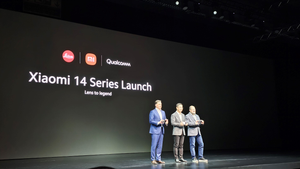Cinia Seeks Partners for Arctic Rollout
Finnish firm plans a 10,500km cable route crossing the Russian north coast to Asia, but is it viable?

Just because the Alaskan subsea cable scheme involved a $270 million fraud doesn't mean it was a bad idea.
As reported by Bloomberg, Elizabeth Pierce, the former CEO of Alaskan telco start-up Quintillion, massively overstated to investors the capacity sold on her new cable.
She is now serving five years in a Texas prison.
But the plan to bring high-speed Internet to the frozen north lives on. Quintillion is bringing fiber Internet to 10,000 people in remote Alaska.
On the other side of the Arctic Circle, Finnish firm Cinia is plotting a 10,500km cable that crosses the Russian north coast to Asia.
Currently east Asian markets can connect to Europe through a terrestrial system across Russia. But more likely they will go the long way around through Singapore and the Middle East, or the even longer way round across the Pacific and the Atlantic.
Cinia's planned 30Tbit/s cable, Artic Connect, would roughly halve that distance and, according to marketing manager Minna Järvinen, improve latency by 25-40%.
The route would also avoid the disruption sometimes caused on major shipping routes or the political risks of the Middle East, not to mention the US's increasingly stringent security regime.
The melting polar cap means is that it is feasible to build low-latency cables that go over the top. The question is can they be viable?
Cinia, owned 78% by the Finnish transport ministry, already operates C-Lion 1, a 1,173km cable between Helsinki and Rostock on Germany's north coast.
For more fixed broadband market coverage and insights, check out our dedicated broadband content channel here on Light Reading.
But it has run into the same problem that Elizabeth Pierce encountered and is familiar to all early stage cable projects: Who will buy the capacity?
Today virtually all major submarine cables are built by those who can fill the capacity at one end or the other. That means telcos and increasingly OTT firms such as Facebook and Google are the main owners.
The logical investors for Arctic Connect are telcos, especially those in Asia. Cinia says it is looking in Asia and elsewhere for partners.
So far it has signed an agreement with MegaFon, which signals that the Russian telco wants in, but only after the project looks viable.
The system will likely cost between €700 million and €1 billion ($778 million to $1.11 billion), "depending on the final design, the number of possible branches and/or extensions to the main system from Europe to Asia," Järvinen told Light Reading.
Cinia aims to complete the main part of the cable by 2022/23.
— Robert Clark, contributing editor, special to Light Reading
About the Author(s)
You May Also Like












